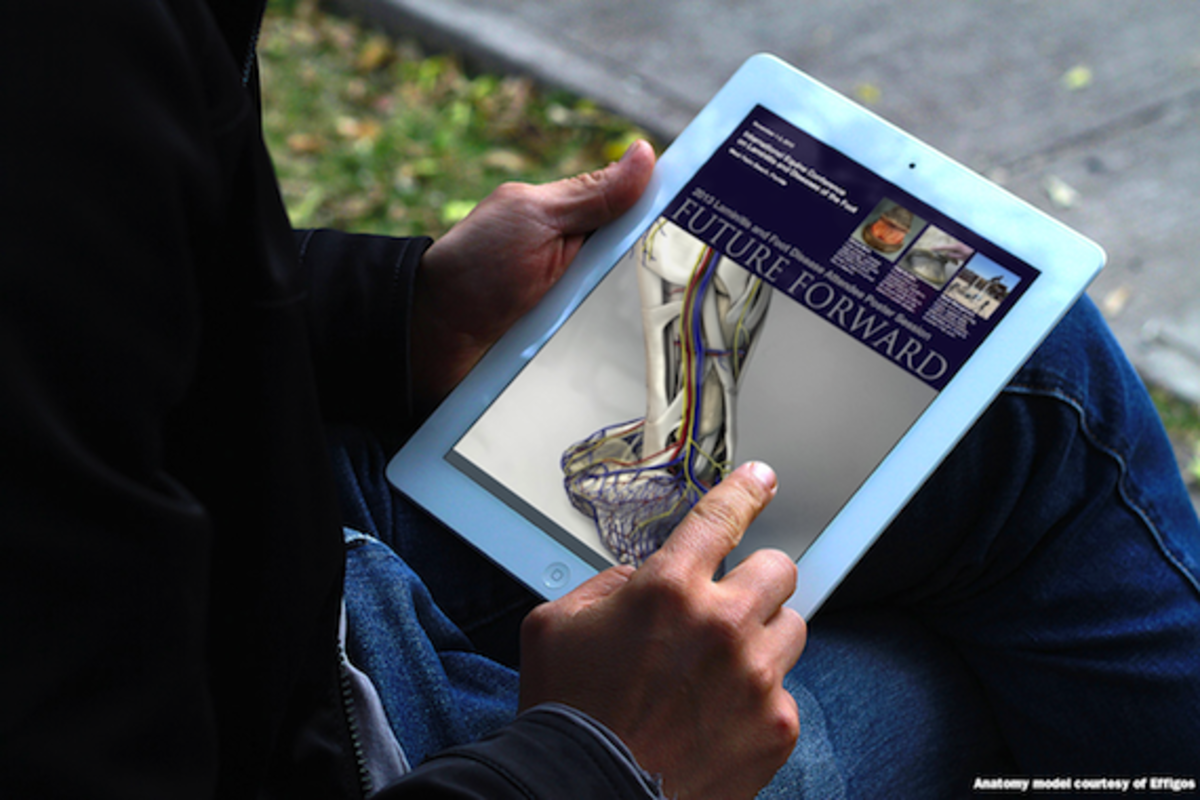Laminitis Conference: The Event Your Horse Would Want You (and Your Veterinarian) to Attend
- March 10, 2017
- ⎯ Fran Jurga
Laminitis was once a word that was spoken in a solemn whisper. It was a dreaded disease then, just as it is now, but it was also uncommon, except maybe in fat ponies who seemed to get lame in the spring.

Their hooves would be rough with rings and high heels, but they’d get through it, or maybe they’d get shoes and pads. You’d forget the “L” word until the next spring, when (groan), it would come back again with the lush, green grass.

“Fat pony disease,” ?your veterinarian teased you. You’d tried using a muzzle, tried keeping him in, tried putting him in a separate pen. Nothing worked. So you lived with it. And he lived with it. You saw his pain. You gave him bute.
But all that changed around the beginning of this century, when laminitis became so common that almost everyone knew someone who was dealing with it. Laminitis graduated from forgotten backyard ponies to mature, well-kept horses. Whether it was the low-grade chronic laminitis of the plump easy keepers or the sadly debilitating laminitis of Cushing’s disease in older horses, we started to talk about how common it was.
And when more and more of those beloved horses eventually lost their lives because of this insidious and common form, we stopped asking “why me?” and just asked “why?”
The “train wreck” cases of severe, life-threatening laminitis caused by drug interactions, colic complications, colitis, support limb laminitis, or grain overload were still out there, but the new form was like laminitis with a small “l”, and it was–and is–everywhere.
Estimates are that 90 percent of laminitis cases are caused by an underlying hormonal or “metabolic” issue. And if you suspect that your horse is in the at-risk population of middle-aged and older horses, you can begin yearly or semi-annual testing of your horse’s insulin and ACTH hormone levels.
Laminitis is no longer something that happens to other people’s horses. You can see it coming, if you know where to look. If you suspect an impending episode, you can ice your horse’s lower limbs and, if done properly, avert a crisis. And that’s where laminitis education comes in.
Laminitis education once focused on the aftermath of the disease: mechanical therapy for deformed?feet, and debating about types of shoes to “reverse rotation”. Now it has evolved to intervention and prevention. ?It is about understanding grazing, diet, carbohydrates, seasonal hormone fluctuations, cresty necks, supplements and their interactions, medications, hay analysis, and warning signs that can appear in the foot long before the horse goes lame.
[VIDEOSINGLE type=”youtube” keyid=”A7pNN3VzpDM”, width=”560″, height=”344″]
In this video from the British charity-supported Talk About Laminitis/Laminitis Revolution webinars, a horse owner recounts a typical story of a pony who suffered from laminitis each year until blood tests showed that the cause was hormonal. Simple medication is now allowing the pony to be active and ridden again.
Even more importantly, it is now about how and when to do testing and how and when to apply cryotherapy correctly to prevent laminitis. Those two recent developments in laminitis research have changed the face of the disease and empowered local vets and horse owners to be proactive defenders of the horses in their care.
Ten days from now, the International Equine Conference on Laminitis and Diseases of the Foot, held every two years in West Palm Beach, Florida, will open its doors. Sixty speakers and presenters from five continents will share their research, clinical experience and data. Four programs under one roof–research, clinical medicine,?hoof science?and owner education–fill three days.
The problem is that only a small number of horses will benefit from a conference like this because only a small number of equine health professionals will invest in such specialized education. Horse owners aren’t concerned about laminitis until it happens to their horses. And statistics show that, unless owners learn how to prevent the common metabolic form, it very well may be something their horses will face.
In Great Britain, charities like the Animal Health Trust, World Horse Welfare, British Horse Society and Redwings Horse Sanctuary banded together to finance research and a national education project called “Talk About Laminitis” to inform horse owners. Through the program, blood tests for ACTH are free in that country.
[VIDEOSINGLE type=”youtube” keyid=”G2sJN8yLOCk”, width=”560″, height=”344″]
The Animal Health Foundation made this video on laminitis prevention. Dr. Walsh will speak at the Laminitis Conference in Florida.
In America, we have the all-volunteer Animal Health Foundation funding laminitis research and making sincere efforts to educate horse owners. The AHF video series on laminitis is critical information for anyone hoping to get up to date on current laminitis prevention and treatment advice.
Veterinarian Eleanor Kellon is veterinary advisor to an online support group for owners of ?”ECIR” (Equine Cushings and Insulin Resistant) horses with thousands of horse owners enrolled.
But too many horseowners still hope that buying an expensive feed supplement or investing in a designer hoof trim will counteract a cresty neck, fat deposits, rough-ringed feet, stretched white lines and horses who are reluctant to romp around the pasture the way they once did.
For those who want to know more, who need to know more, and who feel their horses deserve it, the education opportunity is there. You can’t order it online. You can’t buy it at the tack store. You can’t find it on a chat forum. It’s not in the back of your farrier’s truck. You can learn it the hard way, through trial and error and watching your horse suffer, or you can learn it by making a commitment to learn.
Suggestions:
- Join the Animal Health Foundation e-mail list or “like” the AHF Facebook page and subscribe to the AHF YouTube channel.
- Watch the video archives of both the spring and fall “Talk About Laminitis” webinars on metabolic laminitis.
- Attend The Laminitis Conference, or encourage your veterinarian to attend.
- Sign up websites like the ECIR Group and SaferGrass.org, and try not to be overwhelmed by the volume of information.
- Make a plan to protect your horses from laminitis, or to begin to conscientiously manage a horse in your care.
- Until you have a plan, don’t buy anything. Base your plan on test results, hay tests, your environment, the horse’s history, and your budget. Be realistic.
- If you think laminitis prevention is expensive, know that laminitis is many times more expensive.





